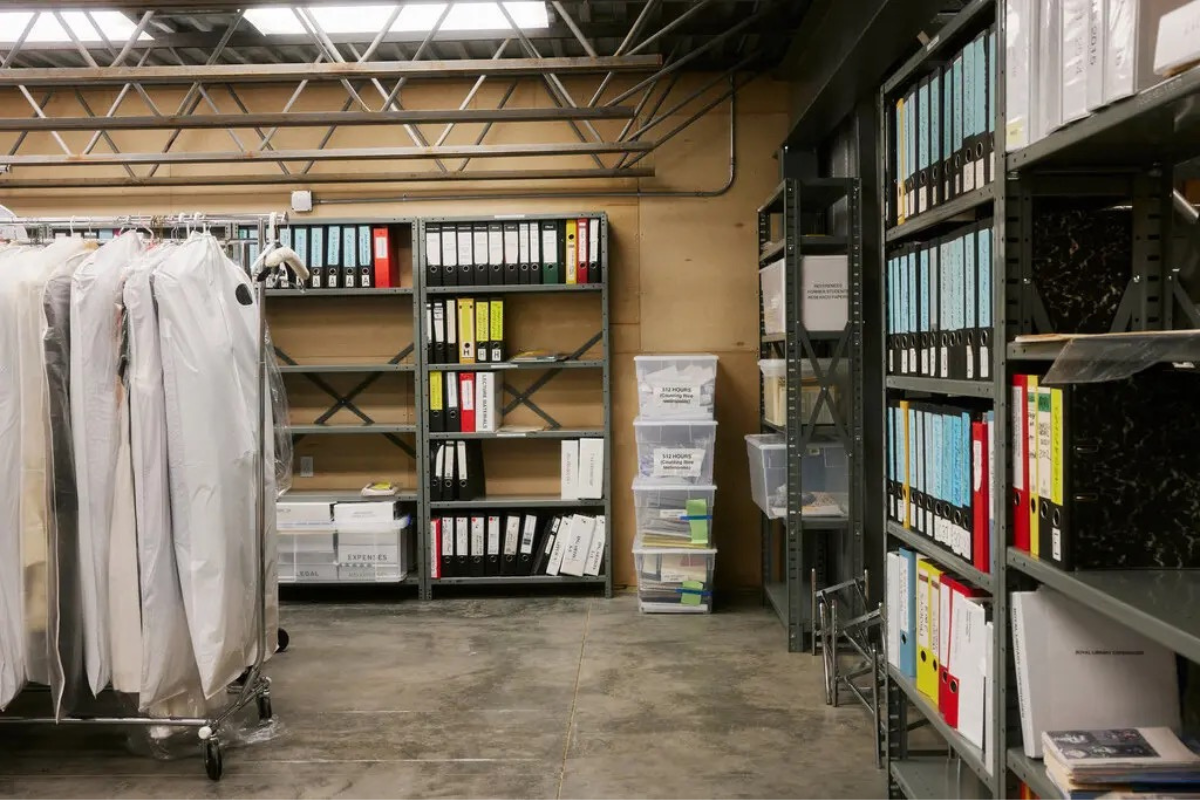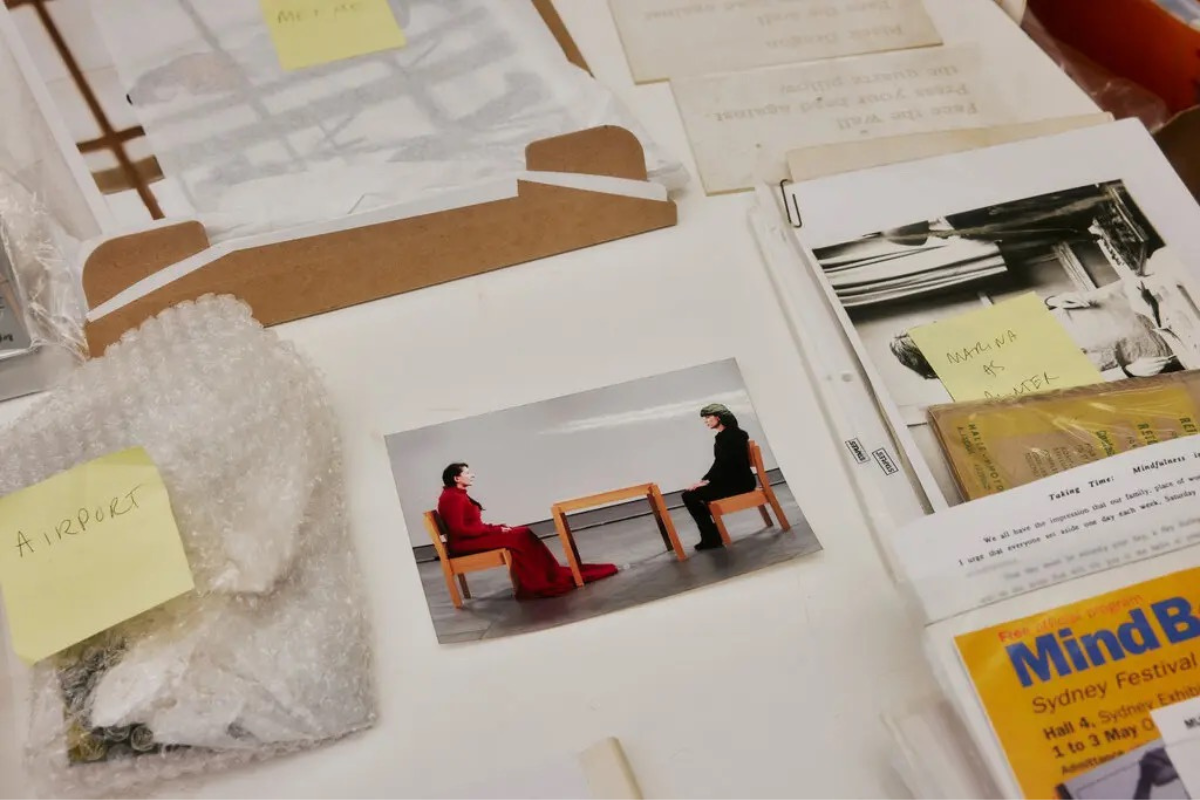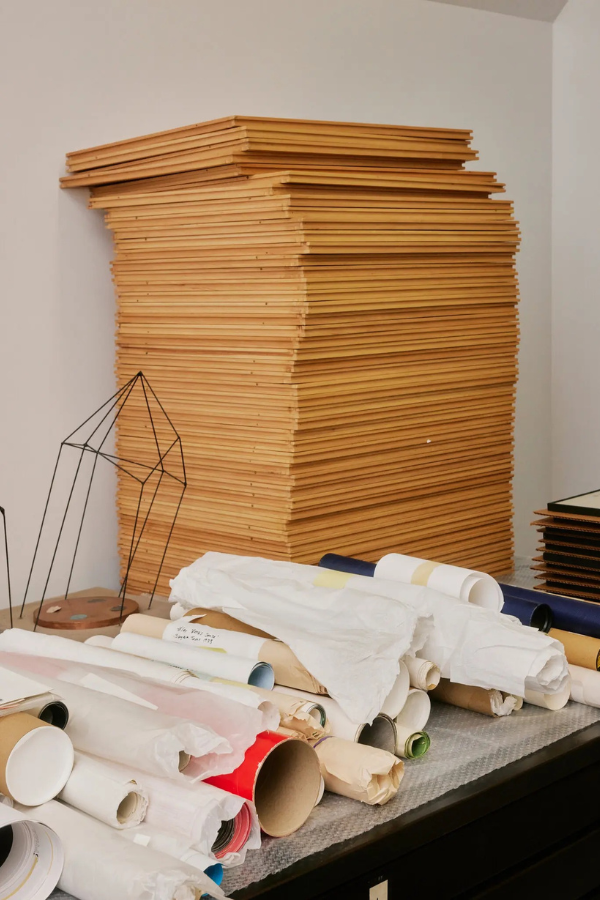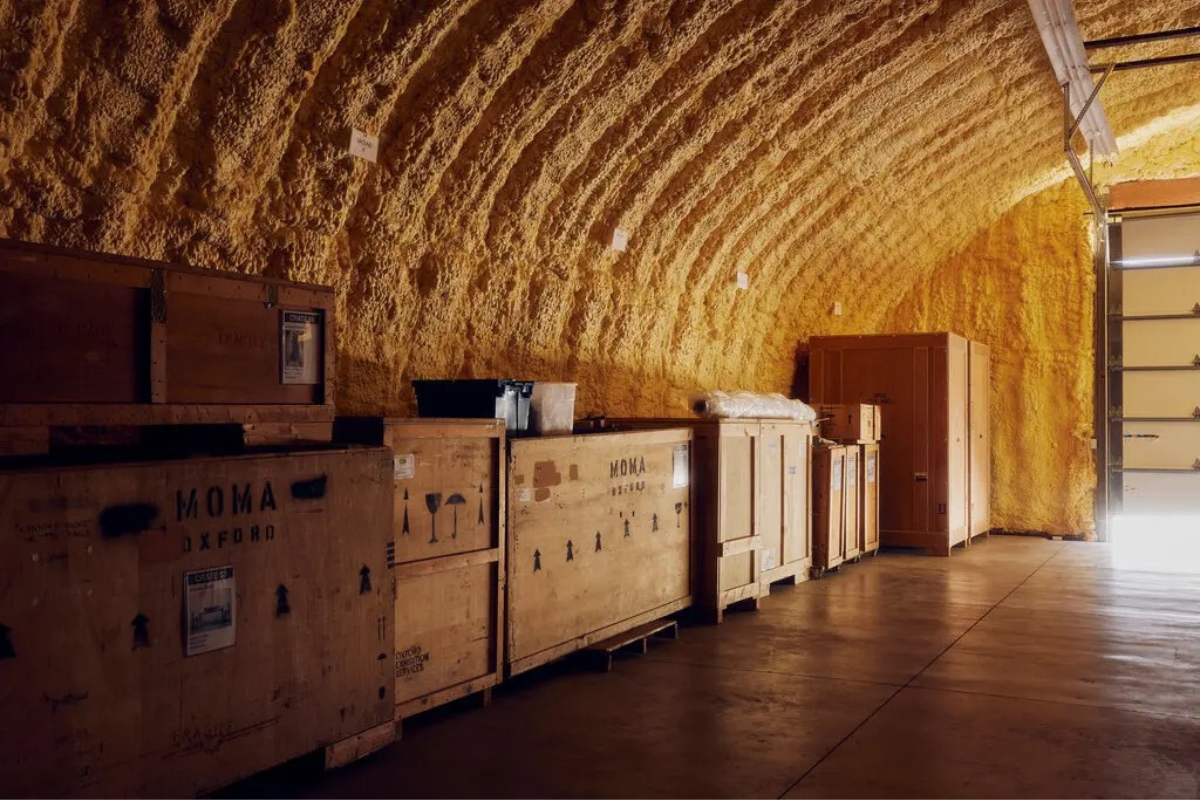Brodie is a platinum blond, loose curls cascading down the shoulders. Lil Flip is a raven do with ends flipped up just so, flirty and fierce. And then there’s Pee Wee, a mod black bob reminiscent of Ringo Starr’s mop top circa 1966, around the time the Beatles gave up all pretense that they were just four nice lads from Liverpool. On a Saturday night in mid-August, the three are arranged on Lucite wig stands in Anderson .Paak’s dressing room backstage at the Dolby Live amphitheater at the Park MGM resort in Las Vegas. A stylist attends to them while .Paak lounges on a sofa, fuzzy Kangol bucket hat on his head, blacked-out Gucci shades on his eyes, wearing shorts and a short-sleeved button-up shirt open at the chest to reveal a “Hotter Than July”-era braided-and-beaded Stevie Wonder tattoo.
At 36, .Paak seems to have it all figured out: how to have his hair done from 10 feet away; how to pair commercial success with critical acclaim, as he has with Silk Sonic, the soulful superduo he conceived in 2017 with the pop star Bruno Mars, which will be playing in about two hours; how to make music that defies and defines genres, as demonstrated by the multiple collaborations he’s released just this past summer with everyone from the pop singer and actress Hailee Steinfeld to the Haitian Canadian house producer Kaytranada; how to be a married man and father to two young children.
But I can’t stop thinking about those wigs. Anyone who’s followed .Paak’s career since his 2014 studio album debut, “Venice,” or before that, with his direct-to-SoundCloud releases as Breezy Lovejoy during the early 2000s, knows that he has a penchant for hats. He owns hundreds, from thrift-store fedoras to knitted beanies to the bucket hats you’ll often see him rocking today. What began as a practical workaround for the common condition of thinning hair soon became a point of pride. “That’s gonna be my whole thing,” he recalls thinking. “Kids are gonna dress like me for Halloween!”
Then “I realised that every pop icon had a head of hair on them,” he says, in the swaggering yet self-effacing tone he adopts when picking up awards, another thing he’s been doing these days. Visions of Prince and Rick James, Robert Plant and Bon Jovi dance in my head. “I’m [messed] up in the game if I think I’m gonna make it real big as a musical icon and I ain’t got something I can swing,” he says, whipping his head back and forth. Then he goes still and, through smoky lenses, I see his eyes clearly for the first time. “It really was an epiphany,” he says. “I put it on, and it just did something to my soul.”
“Soul” is an essential term for .Paak, so much so that he gave his firstborn son the name. .Paak is a living embodiment of this bedrock Black musical tradition that variously expresses itself in gospel and funk, hip-hop and punk. Soul is the imperative governing all of his music: the will to move the crowd. You can hear him do just that on his 2016 breakout hit, “Come Down.” In under three minutes, .Paak sings, raps and chants. He grunts and he moans. Words are ancillary to feeling, and feeling expresses itself in rhythm. “The way he attacked [the track] reminds me of, like, James Brown,” the Cincinnati-based hip-hop producer Hi-Tek, who made the beat, said in 2017.
Vocally, .Paak is more Sly Stone than Brown, but he shares with the latter a genius for rhythm. Both artists exercise their voices as emotionally percussive instruments. “In my older music,” .Paak says of the songs he released on SoundCloud, “I loved being inside of the beats and just vibing.” Often he was simply “swagging out,” relying on attitude and delivery rather than on vocal arrangement and songcraft. But with “Come Down” and “Suede,” another 2016 song that figures prominently in his rise to stardom, .Paak unlocked a signature style: raspy in its low registers, honeyed in its highs. “[Someone on] Twitter describes it as if Newports could sing,” he says with pride. He raps with rhythmic subtlety, exploring the possibilities within the pocket of the beat, while exercising a melodic impulse by punctuating phrases with artful vocal runs. He sings, often sublimely, as on Silk Sonic’s “Put On a Smile,” by making the limitations of his physical instrument a part of his style, exerting control over volume, timbre and phrasing. His is a voice under pressure that sometimes sounds just this side of fraying. “It’s not pretty,” .Paak says. Voices capable of conveying such depth of emotion rarely are.
Though .Paak is rooted in tradition, he’s not in thrall to it. Rather, he is activating the past in the present to secure a future for Black music. “There’s no way we could make this funk and bring it into the new age without [our audience] knowing that this is where it starts,” he says. Soul music was medicine for a wounded people emerging from the 1960s, confronting the reality that the legal advances of the civil rights movement and the martyrdom of a generation’s great leaders did not deliver unfettered freedom. For our parents and our grandparents, at least some measure of freedom could be found on the dance floor, at the rent parties and discos that gave way to the block parties and basement jams of hip-hop. The music and the movement enacted a ritual of sonic expiation, a freedom born in sound. We need that sweet soul music urgently again today. .Paak is among the few who supply it.
It’s rare to find a picture of .Paak where he isn’t smiling — in family photo albums and fan selfies, photo shoots and promotional images. In August, he hopped on a viral trend, started on TikTok, where users posted their own blackmail-worthy photos of adolescent awkwardness to a pitched-up chorus from the one-hit wonder Wheatus’s 2000 anthem “Teenage Dirtbag.” In the 13-second clip he posted to Instagram, .Paak first appears as his effortlessly cool present-day self, with chunky shades and a straw-coloured beanie. A scrapbook follows: .Paak with his prom date; blowing out candles on a chocolate cake; wearing a pink lei around his neck on high school graduation day. In all the images, he looks well-fed and happy, usually with glasses on — the corrective kind, not the cool kind. The clip is at once self-deprecating and celebratory, embracing .Paak’s past while marking the distance he’s traveled.
“I’ve always been a silly person who likes to have fun and joke around,” .Paak says. “My mom tells me my dad was the same way. But he was from Philly, from one of the hardest places — his [twin] brother, too. And I don’t see no pictures of them smiling,” he says, then pauses. “Maybe those years of hard living from ancestors meant that I could finally smile because they couldn’t.” He considers this, and the way that he’s dressed. “People died in order for my smiley ass to come out here and carry a Gucci purse.”
.Paak was born Brandon Paak Anderson on Feb. 8, 1986, in the city of Oxnard, Calif., a coastal community 60 miles northwest of downtown Los Angeles. His mother, Brenda Paak Bills, of Black and Korean heritage, was adopted from a South Korean orphanage by a Black American couple who lived in Compton and then in Oxnard. His father, Ronald Anderson, relocated from Philadelphia to Southern California after joining the Navy. The couple met at a nightclub in 1982, married in 1985, then had .Paak seven months later, and his sister Fielding two years after that. (.Paak is the second youngest in a blended family of nine siblings.) Brenda had a hustler’s mentality; .Paak recalls her working all the time during his childhood, building a strawberry farm business that eventually had her wholesaling to grocery stores and restaurants. Ronald held things down as best he could at home, though he suffered from addiction and was in and out of rehab.
One summer evening in 1993, a 7-year-old .Paak and his 5-year-old sister witnessed their father confront their mother as she came home from work. He threatened her with a gun and began strangling her in the middle of the street. Charged with attempted murder, he was sentenced to 14 years in prison, of which he would serve six and a half. He died in 2011. A decade after the assault, .Paak’s mother — who had remarried, moved the family to a sprawling home in the foothills of Ventura and given up the strawberry business after consecutive harvests ruined by El Niño — engaged with her husband in a series of business dealings that caught the attention of the Ventura County District Attorney’s office. She pleaded guilty to 22 counts of securities fraud and spent seven and a half years in prison. When she was released in 2011, .Paak was 25 years old. He’d been homeless for a time, during which he relied on friends for shelter.
Listen closely to .Paak’s songs from his solo projects and you’ll hear an autobiography told in fragments. Pieced together, the lyrics present a mosaic of a fractured life made whole through the sustaining love of family — both biological and chosen — and the restorative power of art. On “The Season/Carry Me,” a two-part, nearly six-minute-long song from .Paak’s sophomore album, “Malibu” (2016), he makes it plain: “Your mom’s in prison / Your father need a new kidney / Your family’s splitting, rivalries between siblings.” Later in the song, he offers a summation without self-pity: “When I look at my tree, I see leaves missing / Generations of harsh living and addiction.” The chorus of “Carry Me” voices a searching question, left unanswered: “Mama, can you carry me?” Two years later, on “Saviers Road,” titled after a well-known street in Oxnard, .Paak recounts one of his most memorable hustles — processing marijuana plants: “Trimmin’ flowers in the Marriott with little cuz / Send ’em off to Arizona, let ’em build a buzz.”
In 2004, the recordings that .Paak, who had just graduated from high school, was making in his bedroom and posting online began to attract the interest of labels. He resisted, however, their plans to package him and constrain his sound (“I didn’t have anything they could really market,” he told the comedian Marc Maron on his podcast in 2019. “This is in the height of crunk music” — up-tempo, club-oriented hip-hop — “and that’s really what they wanted me to make”), so he turned down those opportunities and even considered quitting music for a time. But over the next decade, he established himself as a fixture in the Los Angeles music scene, along with his band, the Free Nationals. Through his 20s and early 30s he was a session player, a onetime drummer for the former “American Idol” contestant Haley Reinhart, a successful touring performer and an eager collaborator with artists across genres.
It was shortly before a 2015 meeting with Dr. Dre that he decided he needed a different name; he just couldn’t introduce himself to the rapper and producer as Breezy Lovejoy. The “Anderson” is self-explanatory. “Paak,” which he gets from his mother, is an accidental corruption of “Park,” the third most common surname in South Korea. As for that period, he explained it most clearly to an NPR interviewer back in 2016: “The dot stands for ‘detail,’” he said. “I spent a lot of time working on my craft, developing my style and, after I came out of my little incubation, I promised that I would pay attention to detail.” In the years since he signed with Dr. Dre’s Aftermath Entertainment label in 2016, .Paak has won eight Grammys, half of them on a single night (April 3, 2022) for a single song (Silk Sonic’s “Leave the Door Open”). Together, making their way to accept the final award of the night, for Record of the Year, .Paak and Mars struck a choreographed pose, then strutted up to the stage. “Listen, listen, listen,” .Paak began. “We are really trying our hardest to remain humble at this point. But in the industry, we call that a clean sweep!” Then he flipped his wig.
.Paak’s bravado, his love of fashion, his whole persona — from the wigs to the red-carpet antics (witness him at this year’s Met Gala affecting an English accent) — all place him in the long vernacular tradition of the trickster. In 1958, making the case for the jazz legend Louis Armstrong as the epitome of the archetype, Ralph Ellison offered a description that could also apply to .Paak: “[H]e emphasises the physicality of his music with sweat, spittle and facial contortions; he performs the magical feat of making romantic melody issue from a throat of gravel.” As different as they are, Armstrong and .Paak both transform personal pain into public joy through feel-good music that issues from its proximity to, rather than its distance from, suffering.
Sometimes when he is alone, like on a long flight, “I just break out and start crying randomly,” .Paak says. “I’ll just be watching a random thing on TV and I’ll start sobbing. Even watching a blank screen and just sobbing.” The smile on his face is both a genuine expression of joy and a way to master pain. “I smile when I’m happy, smile when I’m angry,” he says, “smile when I’m hungry, smile when I’m full.” The smile, like the wigs, helps free him to make art out of even his most brutal experiences.
.Paak is in a period of reconciliation now — with his past, and with what he wants to do next artistically. He has grown increasingly close to his mother, who lives in Atlanta these days in a home he bought for her. He and his wife, the South Korean-born musician Heyyoun Chang, have two sons (Soul, 11, and Shine, 5). During quarantine, when touring stopped, .Paak seized on the opportunity to connect with his family, especially with his older son, who was interested in building his YouTube channel. .Paak went to work, filming skits for Soul. The channel grew even as his son’s interest shrank, and .Paak has gone on to direct lush and cinematic music videos for himself and others, including Leon Bridges (“Motorbike”) and DOMi & J.D. Beck (“Smile” and “Take a Chance”), the first artists signed to his new label, Apeshit, Inc. At June’s BET Awards, .Paak was named Video Director of the Year. And he’s signed on to direct and star in his first feature film, a dramatic comedy called “K-Pops!,” in which .Paak plays a washed-up American musician who travels to South Korea and discovers he has a son (played by Soul) who is part of an up-and-coming K-pop group. What begins as a calculated attempt to restart his career on the back of his estranged son’s burgeoning fame becomes a story about fatherhood and redemption.
Yet what still brings him the most solace — and inspires the most fervour in fans — hasn’t changed. The “closest I get to meditation,” he says, is playing drums. “That’s the closest I feel like I am to God.” The history of popular music has only a handful of drummer-lead singers, though among them are some of the greats. A few choose to step away from the drums when moving to the front of the stage, like the Eagles’ Don Henley and Genesis’s Phil Collins, while others continue to do double duty, like Sheila E. and the Band’s Levon Helm. .Paak began drumming out of necessity; he and his band couldn’t lock the right drummer down and, besides, it was “one less person to split the money with.”
But .Paak was also made for the drums. He heard rhythms in his head before he knew what to do with them. In elementary school, he would tap on tabletops and try to beatbox. “The teachers started calling me saying that Brandon was disturbing the class because he was noisy,” .Paak’s mother told the ESPN reporter (and her former Oxnard neighbour) Dwayne Bray, who in 2021 published an account of .Paak’s family life. When .Paak was in middle school, his stepfather bought him his first drum kit; his mother, recognising her son’s talent, encouraged him to play along to soul music: Archie Bell and the Drells, lots of James Brown. By age 12, at the prompting of his godsister, he began attending a Baptist church, where he learned the importance of paying dues. “I was there every day just in the pews, waiting for my chance to play,” .Paak recalls. “I couldn’t play that well, but I got better and better. Before I knew it, I was playing every song.”
Drumming in church taught .Paak versatility; he had to switch up the rhythm at the whim of the preacher, the singer, the congregants or all of them at once. It also taught him humility; as a musician in service to the Lord, he had to accept his role as God’s vessel. He started playing drums in school, too, learning about jazz and funk, rock and punk. When he attended punk shows, .Paak noticed an unlikely connection between how kids moved in a mosh pit and how worshipers did in church when struck by the spirit. “It’s just energy,” he says. “It’s all based off different breaks in the music, right?”
Black American music inhabits the intersection of the sacred and the profane. .Paak’s signature call of “Yes, Lawd!” is born of hundreds of hours spent in service to the spirit. It helped prepare him for secular stardom. Soul and gospel share a language of supplication, for a lover or for the Lord; singers brought to their knees in carnal passion or in prayer. Performing for a Silk Sonic audience in Las Vegas, .Paak says, is “like playing for a bunch of Black church people that are singing the songs with so much energy.”
The sold-out Saturday night concert I attend is Silk Sonic’s 30th since February, after an early summer hiatus during which .Paak played for 100,000 fans a night while opening for the Red Hot Chili Peppers in Europe. It seems like an unusually diverse crowd for a Vegas show: a plurality of Black women in their 30s, 40s and 50s, but people of all ages and races, too. In my section alone, I talk to a young Black father and his 11-year-old son; two 20-something Korean couples; a white husband and wife in their 70s.
.Paak and Mars are unlikely musical partners. Given their adulation for all things 1970s — the poster for their Vegas residency features Mars in a bell-bottom leisure suit and .Paak in a wide-collared satin shirt — you might consider them as an updated version of TV’s Odd Couple: Mars as the fastidious Felix and .Paak as let-it-all-hang-out Oscar. When working in the studio, Mars obsesses over songcraft, exploring the possibilities in pre-chorus and chorus, verse and hook, whereas .Paak favours a vibe-driven approach. In their collaboration, which they developed when .Paak was opening for Mars during a 2017 tour of Europe, they’ve found something that neither could achieve alone. “My ears are different now,” .Paak says.
About a half-hour before curtain, I’m asking .Paak what it’s been like to share the stage with Mars, one of the most accomplished showmen in entertainment. Does he ever feel overmatched? “That’s the fun of it,” he responds. “To be with one of the best, man. He has such a good understanding of entertainment because he’s been entertaining since he was a —”
As if on cue, the door flies open and it’s Mars. Instead of a greeting, he starts singing: “Cut my life into pieces!”
.Paak, still lounging on the couch, jumps up and belts his response: “This is my last resort!”
Mars grunts some power chords (“Junt-dunt. Junt-dunt”), accompanied by a mean air guitar. I recognise it as the opening bars of the nu-metal band Papa Roach’s 2000 hit, “Last Resort,” an old song not yet burnished by nostalgia. But .Paak and Mars embrace it without irony, performing an impromptu 30-second cover for an intimate audience: me and .Paak’s longtime photographer and videographer, Israel Ramos.
“They got that and, uh: Do you have the time …” Mars sings.
“To listen to me whine,” .Paak responds, answering the call of Green Day’s 1994 hit “Basket Case.”
“Now do the harmony,” Mars commands.
Their voices intertwine, with .Paak taking the main vocal line and Mars singing high harmony: “Sometimes I give myself the creeps.”
“You gotta say it like ‘crepes,’” Mars says, smiling like a schoolboy.
“Sometimes I give myself the crepes. / Sometimes my mind plays tricks on maaaay!”
“Start a mosh pit!” .Paak says.

On his way out the door, Mars turns to make eye contact with me and with Ramos: “What up, y’all?” Then he’s gone. The whole thing lasts two minutes. It tells you all you need to know about Silk Sonic: the spontaneity and play, the rigour and craft.
Theirs is a show fit for the Las Vegas stage, with an eight-piece band; big, brassy horns; sequinned suits; tightly choreographed dance moves; just the right amount of pyrotechnics. Mars’s vocal runs, his steps and slides, are flawless. Meanwhile, .Paak does most of the patter, teasing the crowd, exhorting them. Twice they roar simply because he takes off his sunglasses. The rapport between the two men is irrepressible; their repartee might be the most vintage part of the evening, harking back not to 1970s funk and soul but to the vaudeville of the 1910s.
Later that night, around 12:30 a.m., at a club called the Barbershop, .Paak, in a blue Gucci suit (Mars once teased him for being a “Gucci whore”) with Brodie on his head, and Mars, casual in a short-sleeved shirt with crisply pleated white pants, red Solo cup in hand, rip through a set of new rock standards — including the well-rehearsed “Last Resort” — in a surprise show. Then, around 1:30 a.m., they make their way to the Main Room, part of a speakeasy called On the Record at the Park MGM, where .Paak (as D.J. Pee .Wee, but with the Brodie wig still in place) spins vinyl for hours with the Las Vegas D.J. and promoter Eddie McDonald by his side pulling albums from the walls. Mars dances most of the time, clinking cups with whoever’s at arm’s length, as .Paak plays Michael Jackson’s “Don’t Stop ’Til You Get Enough” and the Eurythmics’ “Sweet Dreams (Are Made of This).”
Back when .Paak was still just Brandon, he frequently went with his mother and some of his friends to Las Vegas when she and his stepfather would gamble. He and his friends would explore, starting from the family’s comped suite at Caesars Palace and stretching out across the Strip. “I just loved going to restaurants, going to the pool, [ordering] room service and seeing shows,” he recalls — the entertainers Siegfried & Roy, the illusionist David Copperfield, the magicians Penn & Teller, the comedian Carrot Top. He saw Earth, Wind & Fire, even Wayne Newton. “I think that set the standard for me, as far as entertainment goes,” he says. “Vegas is a place where you can’t be out here and have a bad show.”
When his mother walks the Strip now to go watch her son perform, she can see him projected 30 feet tall against the sides of buildings. “It’s crazy, man,” .Paak admits. He still carries the underdog inside of him from all of those years of work and struggle and perseverance. If Mars is a celebrity in a traditional sense, .Paak is one in a different mold — the wigs, the glasses, the hats: All of them help him maintain some anonymity. “I’m hiding in plain sight,” .Paak says. When he cracks a joke backstage about being on billboards but still having to talk his way into clubs, I catch a glimpse of the kid on that Oxnard street 30 years ago. Then he delivers the punchline, which is also the truth: “That’s me!” he says, pointing to the sky. “That’s me right there.”




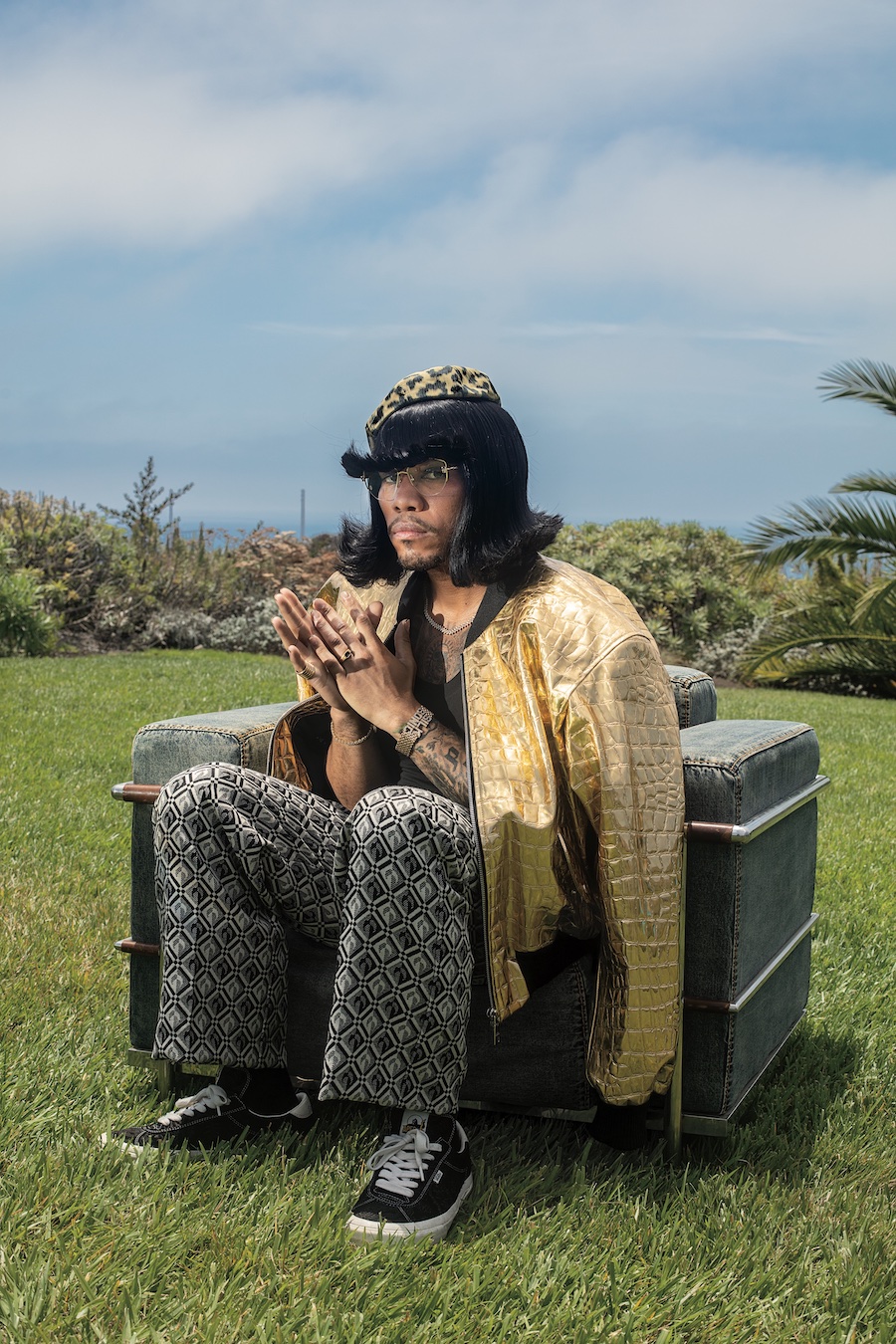 Anderson .Paak, photographed in Malibu, Calif., on July 21, 2022. Dolce & Gabbana jacket, dolcegabbana.com; Judy Turner tank top, judy-turner.com; Marine Serre pants, marineserre.com; Dior Men hat, dior.com; Cartier glasses, cartier.com; Vans x Anderson .Paak shoes, vans.com; and his own jewellery. Photograph by D’Angelo Lovell Williams. Styled by Ian Bradley
Anderson .Paak, photographed in Malibu, Calif., on July 21, 2022. Dolce & Gabbana jacket, dolcegabbana.com; Judy Turner tank top, judy-turner.com; Marine Serre pants, marineserre.com; Dior Men hat, dior.com; Cartier glasses, cartier.com; Vans x Anderson .Paak shoes, vans.com; and his own jewellery. Photograph by D’Angelo Lovell Williams. Styled by Ian Bradley  The multiple-award-winning singer-songwriter Billie Eilish, who admits she struggles with self-doubt.
The multiple-award-winning singer-songwriter Billie Eilish, who admits she struggles with self-doubt. 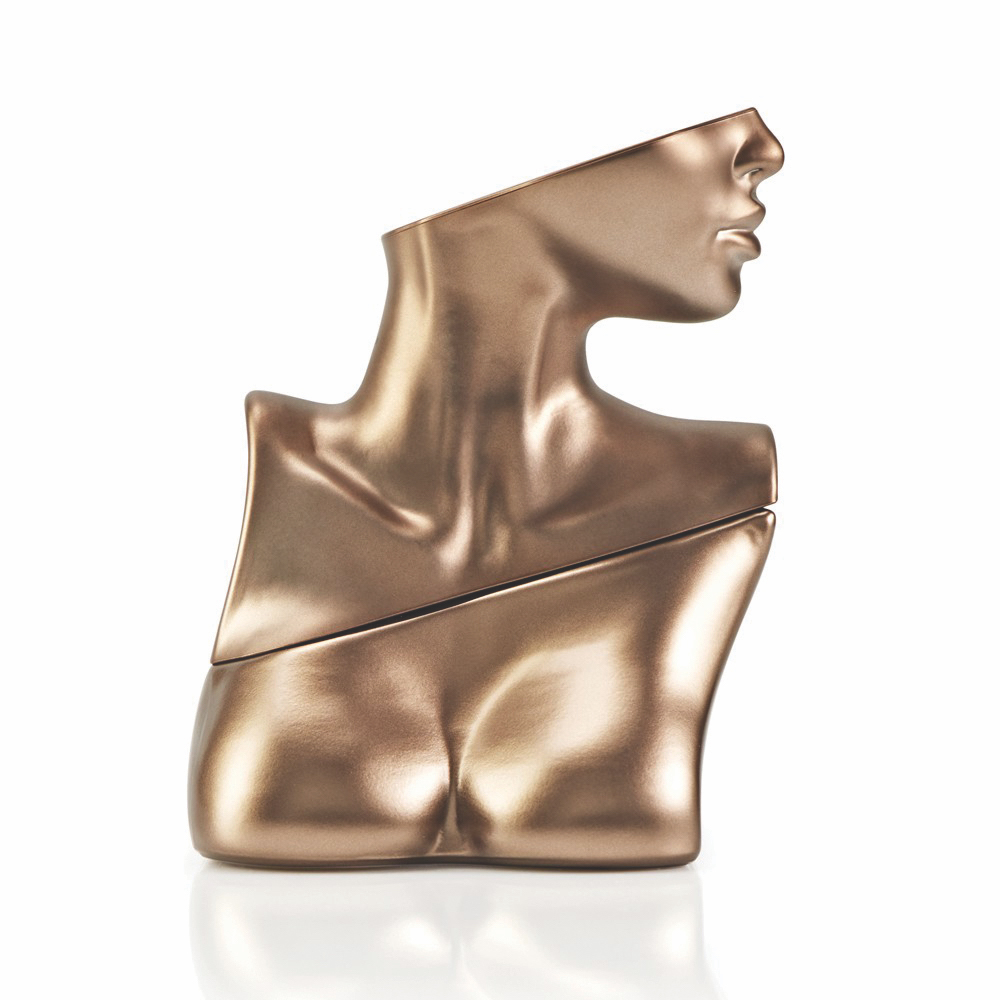
 Verifying the size and thickness of the skins. Photography courtesy Louis Vuitton Malletier Piotr Stoklosa.
Verifying the size and thickness of the skins. Photography courtesy Louis Vuitton Malletier Piotr Stoklosa. 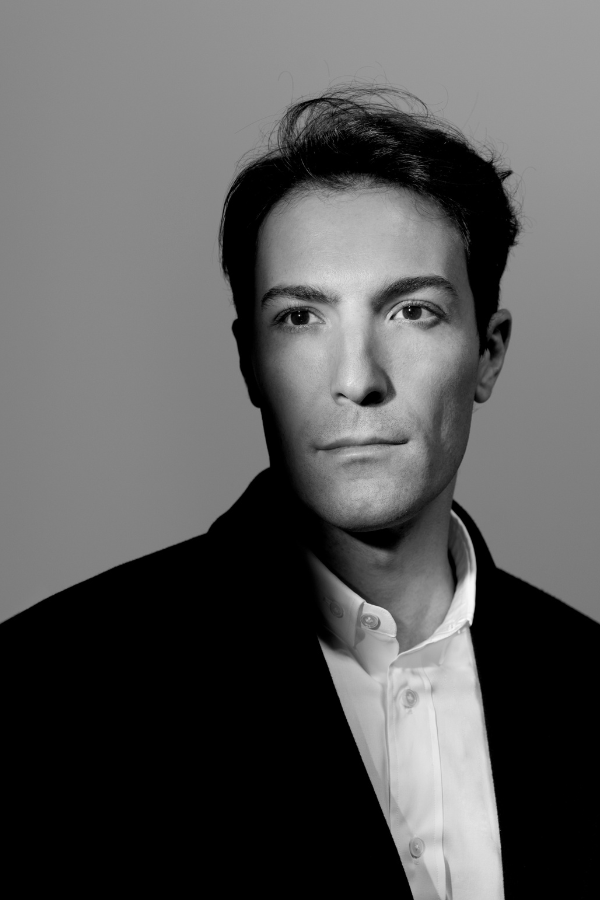




 The artist Cressida Campbell, photographed at her Sydney home in July 2022. Photography by Nic Walker.
The artist Cressida Campbell, photographed at her Sydney home in July 2022. Photography by Nic Walker. 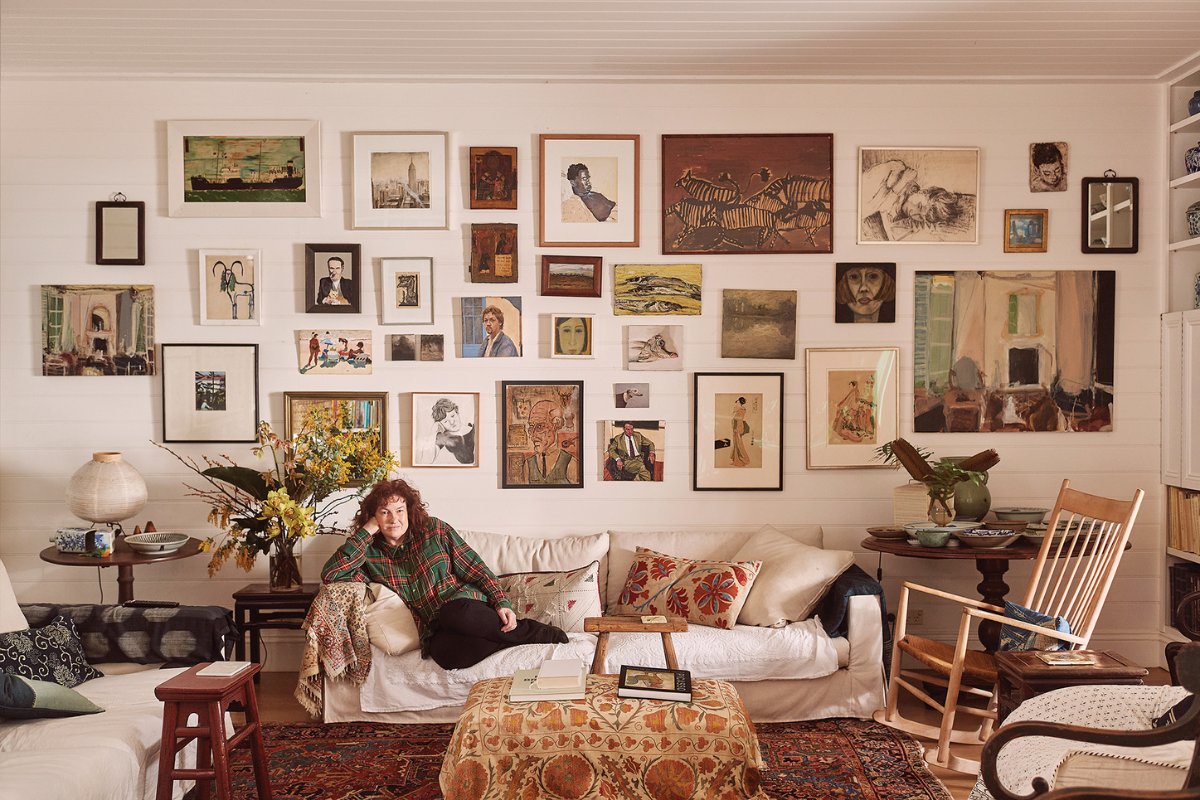

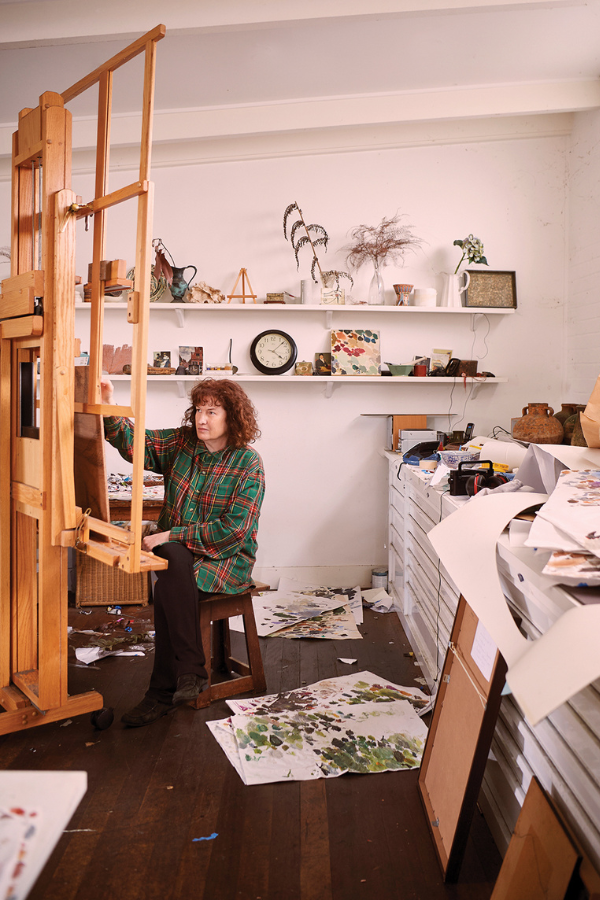

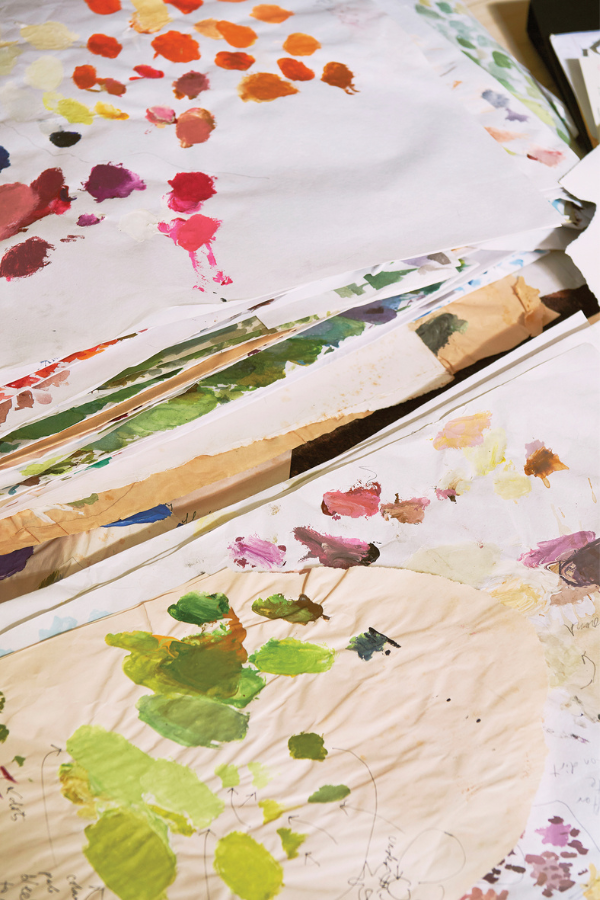

 Omar Musa wears Jude sweater. Photography by Jordan Turner.
Omar Musa wears Jude sweater. Photography by Jordan Turner. 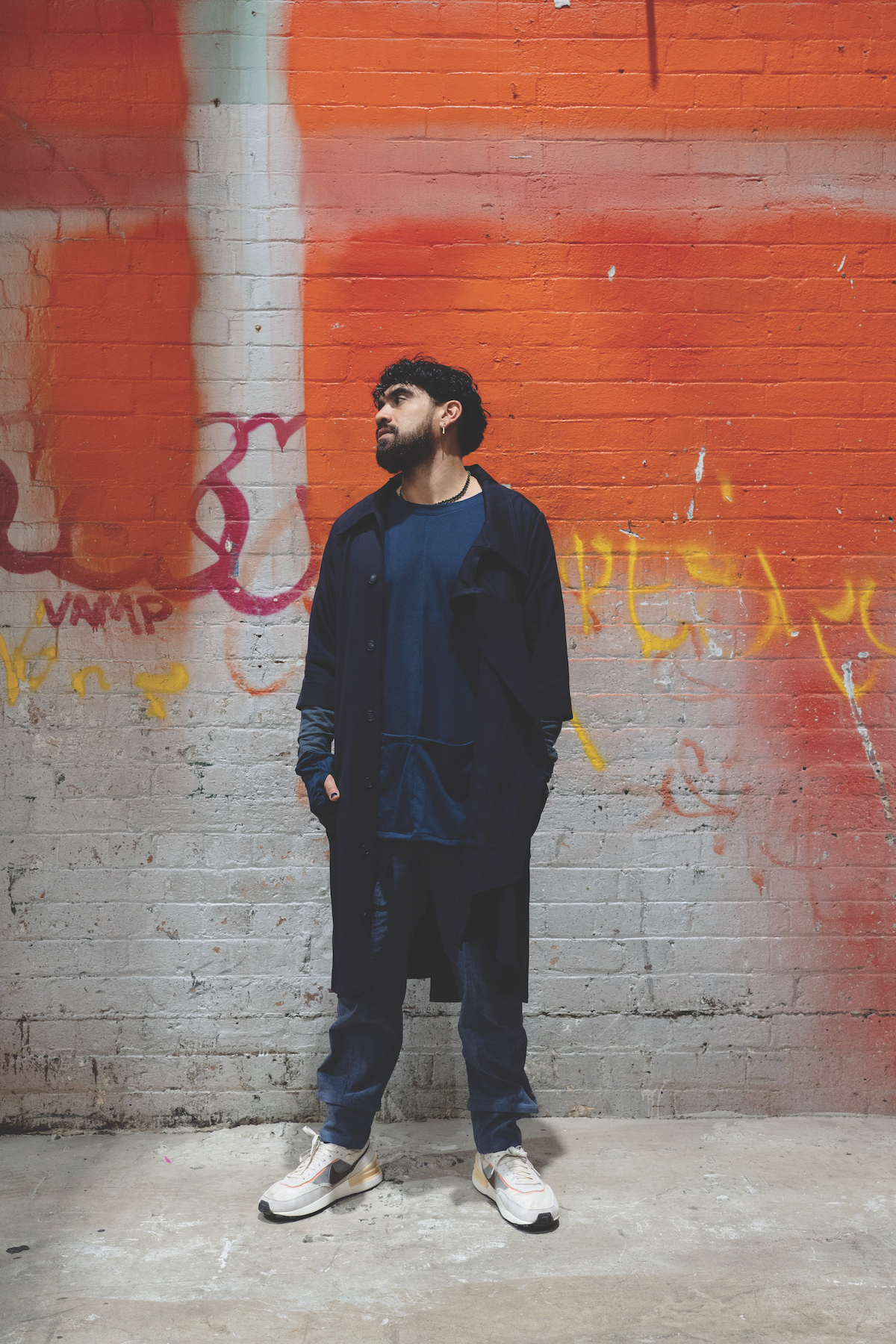
 The performance artist Marina Abramović in the library of her expansive archive in upstate New York, which houses sculptural works, exhibition posters, press clippings and other ephemera from her storied career. Photography by Emiliano Granado.
The performance artist Marina Abramović in the library of her expansive archive in upstate New York, which houses sculptural works, exhibition posters, press clippings and other ephemera from her storied career. Photography by Emiliano Granado. 